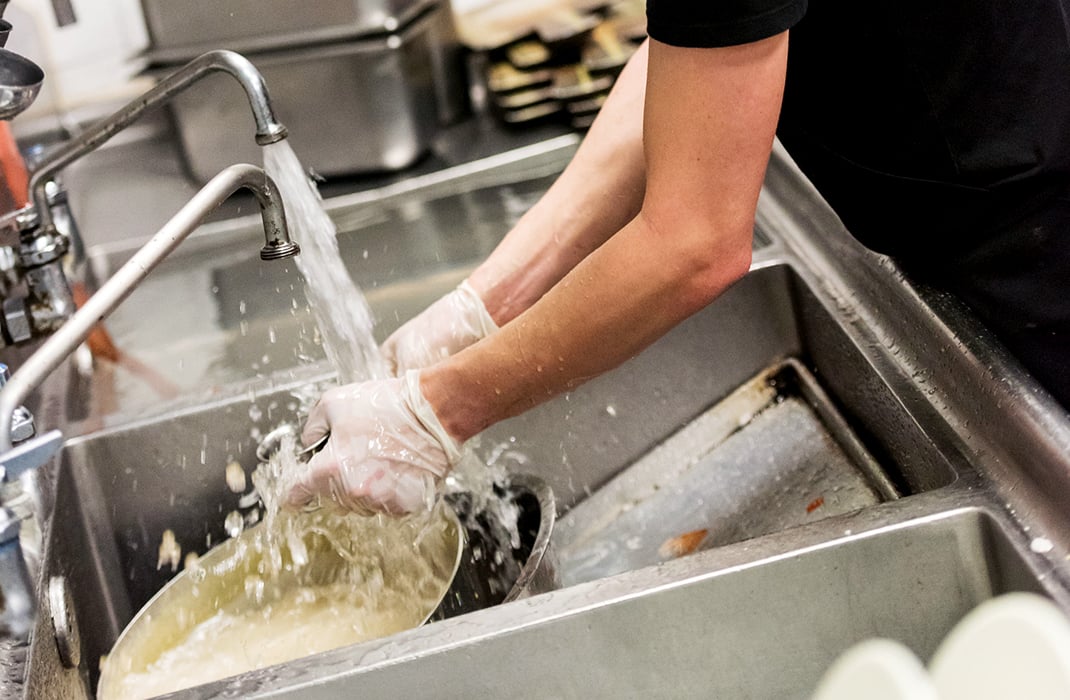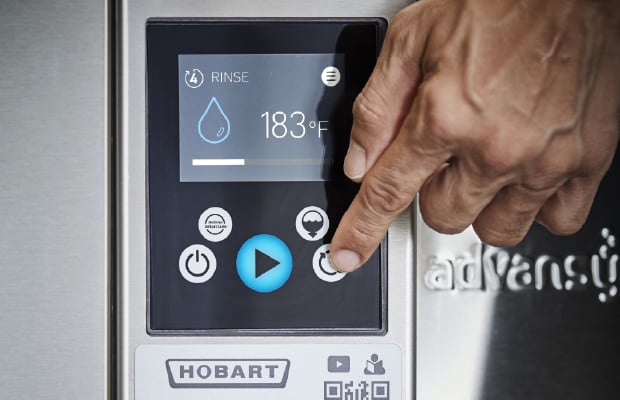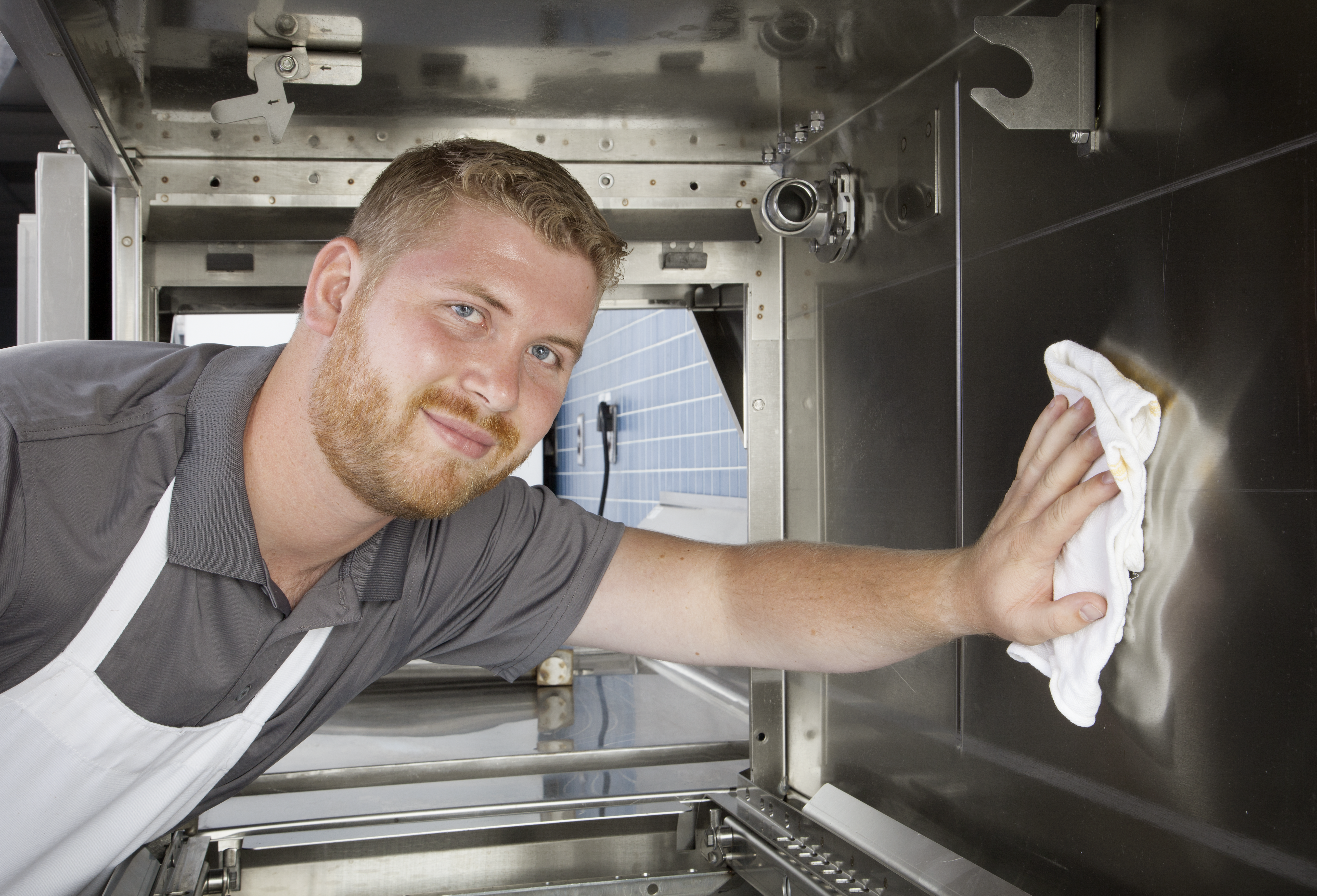The three-compartment sink is a staple of foodservice kitchens. It’s perfect for doing a quick wash up, not to mention most health departments require them in the kitchen. But for operations that rely solely on the three-compartment sink for cleaning all their ware items, kitchen staff spend hours over hot, steamy water, scrubbing at baked-on foods and struggling to keep up with the demand of a busy dining service.
Installing a Hobart LXnR Two-Level Undercounter Dishwasher can improve efficiency, safety and productivity in any kitchen that currently relies on a three-compartment sink. Automated dishmachines ensure consistent chemical dosing and water temperature for proper cleaning and sanitizing, which helps with maintaining food safety protocols and high standards of cleanliness.
Managing Risk
One of the biggest factors at play with the use of three-compartment sinks is human error. When staff make mistakes or fail to follow procedures and guidelines, you not only run the risk of food or grease left on ware, but possible food safety and health code violations as well.
Water temperature. The FDA requires water temperature at minimum of 110 degrees for washing dishes in a three-compartment sink. When first filled up, with the use of a thermometer, most operations can easily meet this. But as time wears on, the temperature drops. In one Hobart study, a sink that registered at 110 degrees at 7 a.m. had dropped to 80 degrees in just five hours. Even with periodic refills to bring the temperature up, by the end of the day the water was at 65 degrees, well below the 110 degree minimum.
The Hobart LXnR Two-Level Undercounter runs every rinse cycle at 180 degrees, so operators can be sure every piece of ware is properly sanitized. The high heat also helps remove tough food soils that are difficult to clean off at lower temperatures.
Detergent amounts. In order to properly clean dishes, the right amount of detergent needs to be added to the water. The LXnR takes away the possibility of human error by automatically adding the correct amount of detergent to each wash cycle. This also eliminates the risk of wasting product, so you’re not throwing money down the drain.
Full submersion. For proper sanitation to occur, items must be fully submersed and soaked in a sanitizing solution for a set amount of time. When a sink isn’t big enough, for many large prepware items submersion is hard to accomplish and easy to circumvent. The LXnR's 17-inch door opening allows for complete sanitization of a variety of large pots and pans, including full size sheet pans.
Quick drying. Drying is just as important as washing, as dampness allows for the growth of mold and bacteria. Many times, people will stack wet dishes, which leads to wet nesting. When using a Hobart LXnR Two-Level Undercounter Dishmachine, the dishrack(s) allows space for air flow and proper drying, and the high temperatures of the wash and rinse cycle speed up drying times, reducing the wasted waiting on dishes to dry.
Saving Your Resources
In addition to cleanliness factors and food safety issues, the use of a three-compartment sink can have a big impact on the environment.
It takes a lot of water to fill a three-compartment sink. For an operation that fills about five times a day, it’s enough water to fill a swimming pool 21 times in just one year! Every time that sink is filled your operation is wasting water, energy and money! A LXnR undercounter dishwasher uses just .62 gallons of water per cycle, saving literally thousands of gallons of water each year over a three-compartment sink.
The people washing the dishes are a resource too, and their talents aren’t used fully when they spend hours standing over a sink. Three-compartment sink washing is unpleasant and time consuming and can lead to low morale and high employee turnover. With a LXnR undercounter dishwasher, you can run a cycle in just 2 or 4 minutes, so staff spend less time washing dishes and more time on kitchen operations or even in the front of the house serving customers.
Making the Change
With the demands of growing your business and delivering a safe, memorable experience for your customer, switching to a commercial dishwasher can reduce the risks of an embarrassing and damaging food safety event, while creating a better experience for your employees and saving time and money. Click here and Check out our infographic to see more of the benefits of automated washing versus a three-compartment sink; or, visit the Hobart website to learn more and get in contact with your local sales representative.
Learn more about manual washing risks and food safety in our FREE FOOD SAFETY FACTBOOK.





.png)


%20proc%20%20(1).jpg)


